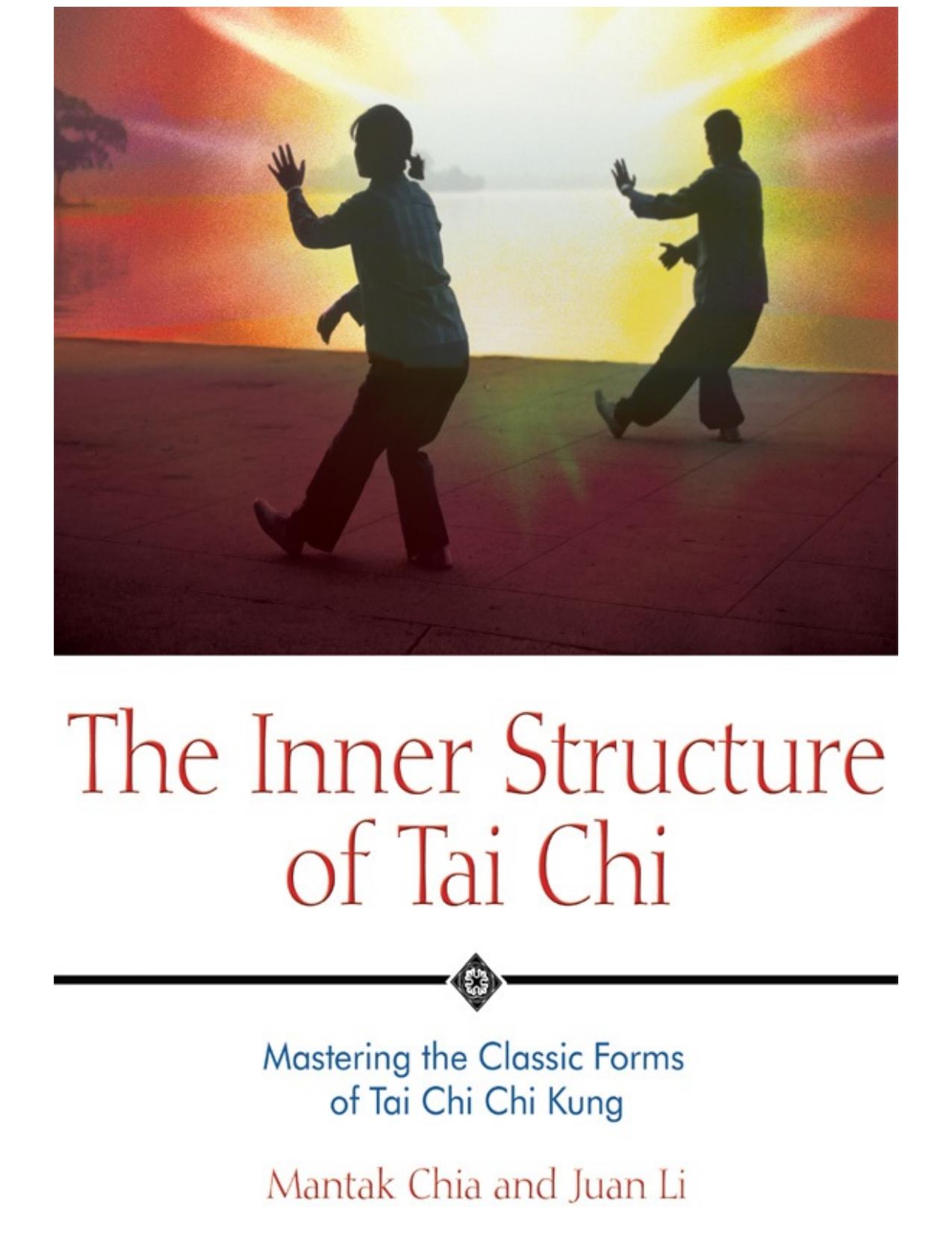The Inner Structure of Tai Chi by Mantak Chia

Author:Mantak Chia
Language: eng
Format: epub, mobi, pdf
Tags: Tai Chi/Martial Arts
ISBN: 9781594778421
Publisher: Inner Traditions / Bear & Company
Published: 2010-12-07T16:00:00+00:00
INTERMEDIATE LEVEL
When all the points covered in the beginning level have been integrated into the Tai Chi form, you can continue the refining process at the intermediate level.
Feel the muscles separating from the bones. Experience deep relaxation in the meditation practice to the point where you feel the muscles separating from the bones. This level of relaxation allows a far more efficient flow of life force than anything previously experienced. Bring that level of relaxation into the movements of Tai Chi.
Guide the form with the mind/eye/heart and chi flow. As a continuation of moving in deep relaxation, allow the Tai Chi movements to be guided primarily by the mind and chi and less by the muscular contraction that is typically used in the beginning level.
Maintain a smooth and even tempo. Observe the rate at which the movements are done at the beginning of the set and aim at having that same flow in the last movements of the set. Since the emphasis here is on the gracefulness of your Tai Chi, the rate must be uniform throughout your practice.
Concentrate on energy discharge. Begin by separating each element of the movement and feel the energy being transferred at each stage. Practicing with slow movements, you are able to feel the exact position of the energy at each stage.
Regulate the size of the step. The best guide is marking the spot where you begin the set. If the steps are always equal, you will finish the set on the same spot at which the form began or very near to it. Even steps also place you facing the exact direction of each transition.
Regulating the measure of your step depends on the length of your legs. When the step is too short, the practitioner usually ends up with the knees extending over the edge of the toes, which puts too much weight on the knees and causes knee pain. If the step is too wide, the center of gravity is lost.
Check for leaning. The specific signs are one shoulder is higher than the other; the hands are not equal when pushing or turning; the hip bone and sacrum are tilted to one side when sinking back; you lean forward during Push and Ward Off; you lean back during sinking motions.
Download
The Inner Structure of Tai Chi by Mantak Chia.mobi
The Inner Structure of Tai Chi by Mantak Chia.pdf
This site does not store any files on its server. We only index and link to content provided by other sites. Please contact the content providers to delete copyright contents if any and email us, we'll remove relevant links or contents immediately.
The remains of the day by Kazuo Ishiguro(8814)
Tools of Titans by Timothy Ferriss(8211)
Giovanni's Room by James Baldwin(7188)
The Black Swan by Nassim Nicholas Taleb(7009)
Inner Engineering: A Yogi's Guide to Joy by Sadhguru(6722)
The Way of Zen by Alan W. Watts(6503)
Asking the Right Questions: A Guide to Critical Thinking by M. Neil Browne & Stuart M. Keeley(5627)
The Power of Now: A Guide to Spiritual Enlightenment by Eckhart Tolle(5603)
The Six Wives Of Henry VIII (WOMEN IN HISTORY) by Fraser Antonia(5394)
Astrophysics for People in a Hurry by Neil DeGrasse Tyson(5130)
Housekeeping by Marilynne Robinson(4328)
12 Rules for Life by Jordan B. Peterson(4249)
Double Down (Diary of a Wimpy Kid Book 11) by Jeff Kinney(4204)
The Ethical Slut by Janet W. Hardy(4172)
Skin in the Game by Nassim Nicholas Taleb(4161)
Ikigai by Héctor García & Francesc Miralles(4123)
The Art of Happiness by The Dalai Lama(4063)
Skin in the Game: Hidden Asymmetries in Daily Life by Nassim Nicholas Taleb(3929)
Walking by Henry David Thoreau(3892)
